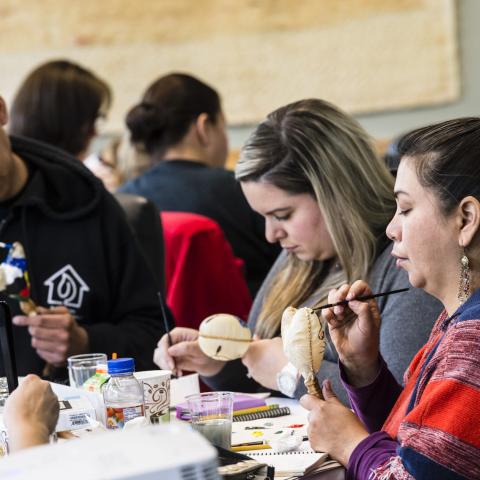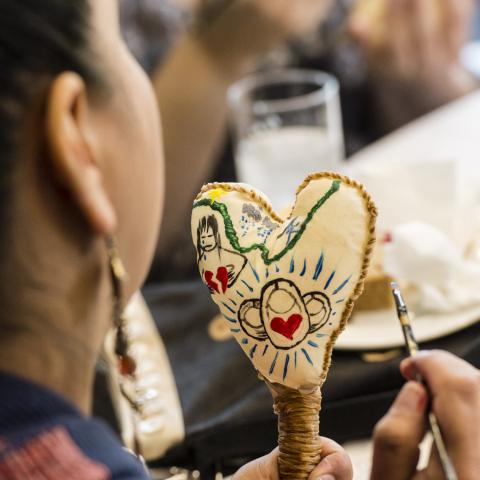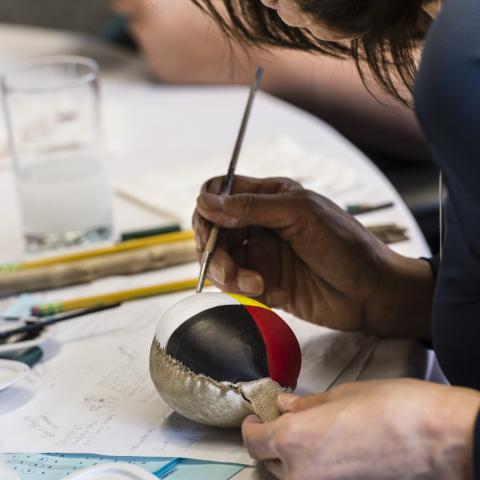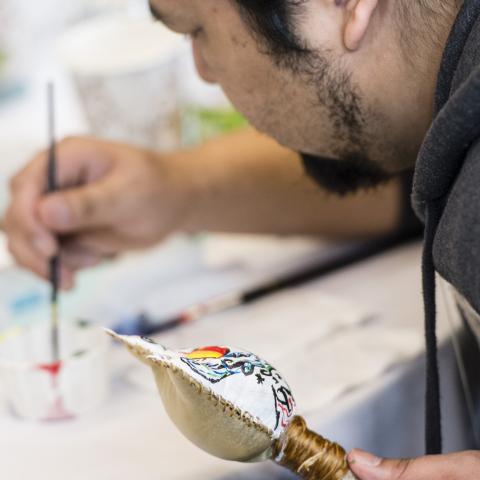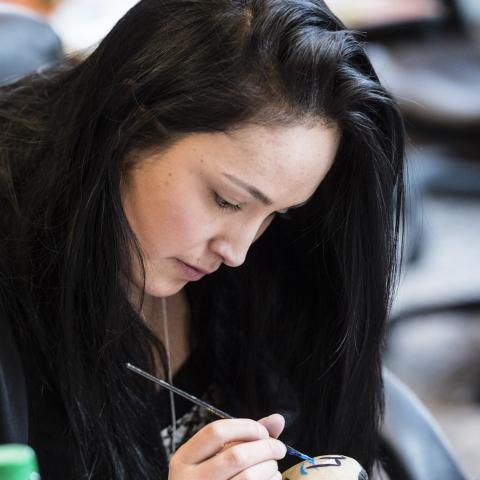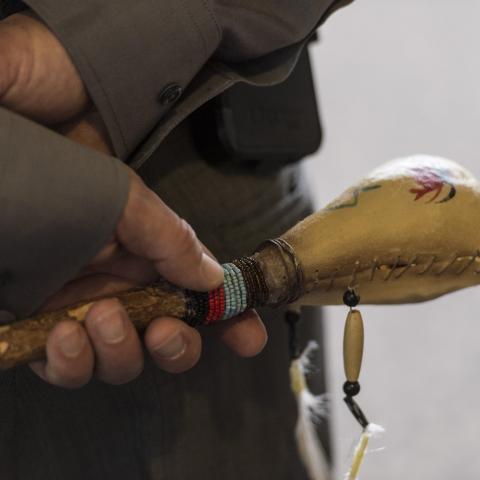Rattle: A Strong Connector to Culture, Spirituality, and Personal Journey

Corey Nash holds the rattle in his hands, gently turning and cradling this object that has become a precious symbol and powerful reminder of his journey as a leader; as a husband and father; and as a Métis person. In a quiet, gentle voice, Nash tells the story of creating his rattle.
As one of the participants in the Indigenous leadership and management development program, Nash and the others were invited by faculty leader Don McIntyre to create either a rattle or a shield during the week of their program. Nash chose the rattle as he remembered once hearing its resonant sound during a sweat lodge ceremony.
McIntyre asked the participants to share their stories with each other as they worked on their rattles, and to not be too surprised if those stories began to shape the object they were creating.
Nash had just met Elder Tom Crane Bear, the cultural and spiritual adviser for Indigenous leadership programs, and was overwhelmed by the experience of their first conversation, and the powerful emotions he was feeling. Before he selected the materials that would go into his rattle, he thought of Elder Tom’s words about Mother Earth, and how important it is that we honour the gifts of the natural world – from the trees, water, and animals, to the rocks that form the mountains.
Growing up without exposure to Indigenous culture, Nash set out to create a rattle that contained precious elements of nature, along with a vision for his family, his community, his role with Correctional Services Canada, and his Métis heritage.
He first chose a small piece of hide left over after others had taken theirs, just perfect for his vision. “I had pictured the rattle bowl as a heart, and there was enough skin for me to make two heart shapes, it was for my wife and I, representing my family.”
As he worked, Nash kept quiet but listened carefully to those around him. They shared stories about their lives, their communities, their challenges, successes, and failures. He thought about his life, and he worked those stories into his rattle.
In another program session, faculty member Murray Dion had mentioned the binary alphabet as he talked about information management. Right then, Nash had an idea that would weave the modern with the traditional in his rattle. “I have six children, so it ended up being quite the project, beading all of their names in binary code.” He beaded his wife’s name at the beginning, his children next, and his at the end, in shiny glass beads winding above a handle made of a piece of elk antler.
McIntyre said the intention behind asking participants to create a rattle, shield, or drum in the programs is to provide not only an experience that tends to build community within the participants, but also offers powerful mnemonic – an object that aids in reflection – to help them connect to what they have learned.
“As you weave the pieces together, you are also weaving the stories in, so it’s not just the pieces of hide that you are using, you are also weaving the stories that are being told all around you,” McIntyre said. “It’s the story that the person told you, and the stories you only half heard at the table next to you, and it’s all of the teachings that we are providing with regards to leadership. The rattle brings them out, because you have tied them tightly inside it.”
A month after our interview, Nash is back at The Banff Centre for Strategic Planning, the sixth and final program required for his Certificate of Indigenous Leadership, Governance and Management Excellence. He brings his rattle, in fact, taking it with him wherever he goes. In this program he has made a drum, and, as an exceptional honour, he proudly received a new name from Elder Tom: ponoká a sa yoh ko mi (Bull Elk), in a special ceremony taking place during one evening of the program.
The closing sessions are always the highlight for McIntyre. Each participant shares the story they have created in their rattle or drum, and McIntyre encourages the group to shake their rattles loudly, or beat their drums with power, enough to raise the rooftops. “We’re showing how loud and how strong of a voice Indigenous people from across the country have, how loud and strong we can be, what a force we have.”
